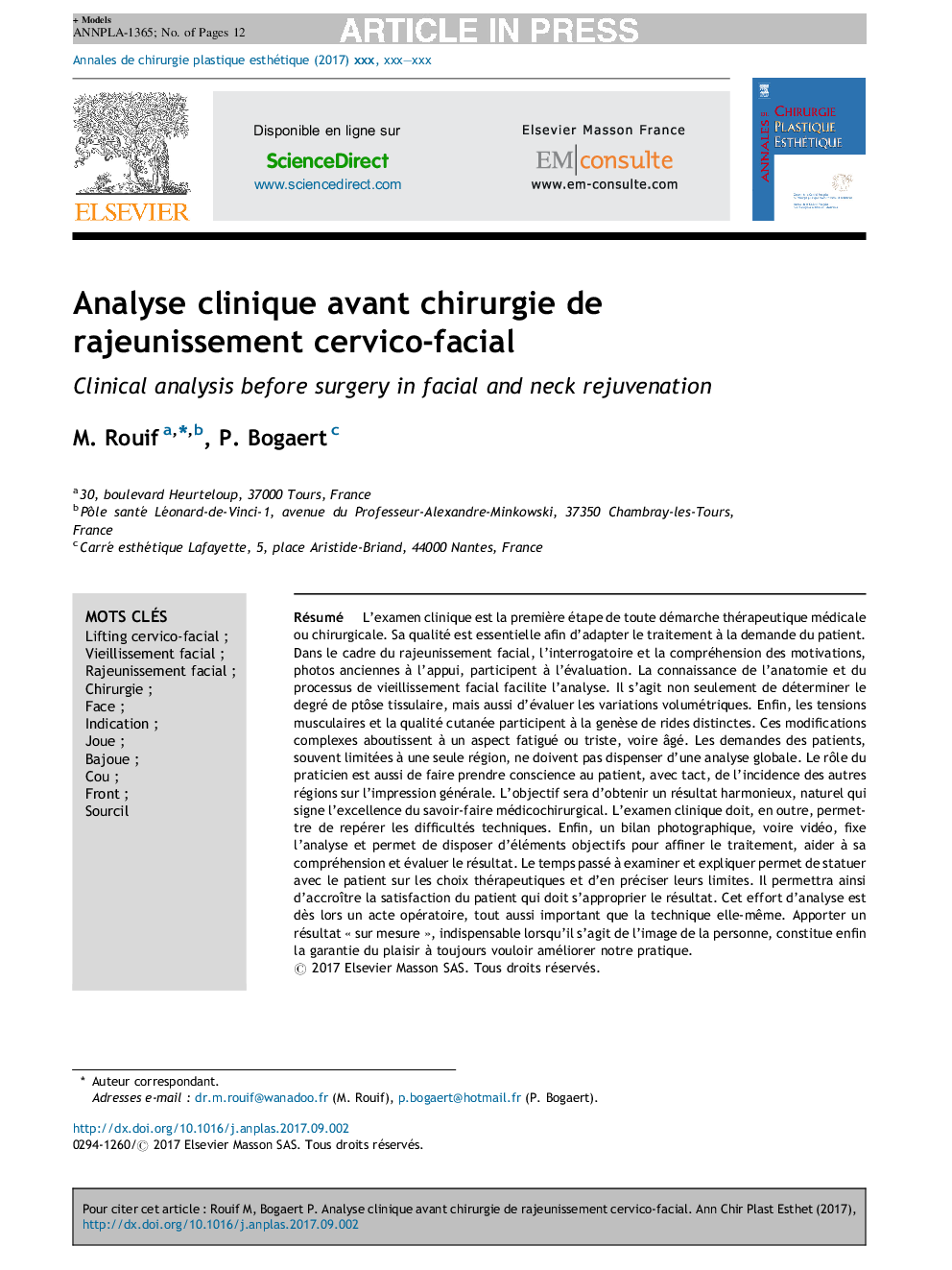| Article ID | Journal | Published Year | Pages | File Type |
|---|---|---|---|---|
| 5644481 | Annales de Chirurgie Plastique Esthétique | 2017 | 12 Pages |
Abstract
The first step to determine a medical or surgical intervention is the clinical exam. The clinical exam is the paramount step to provide a treatment plan that can be modified and individualized accounting the patient preferences. During the consultation for facial rejuvenation, attention should be paid to understand the patient's motivation and expectations. A thorough understanding of the anatomy and the natural history of ageing will facilitate the analysis of the face. Not only the degree of ptosis but also the degree of volume loss will need to be assessed, as well as the influence of the facial muscles, the skin quality, and the different causes of rythids. The comprehensive age-related anatomical changes are often perceived and described as tiredness or sadness. Patients very commonly only point out a single anatomical region. During the consultation, the surgeon should provide the patient with the information of the comprehensive interplay of the different anatomical regions and their individual ageing process. Obtaining a harmonious, natural appearing outcome is the result of excellent surgical skills and applied knowledge. The clinical exam should also find out traps and technical difficulties. Although standardized photographs allow a static evaluation of one's result, video may deliver additional information about the postoperative result, and may contribute to the understanding of the technique used. Spending the additional time by performing a thorough facial analysis and preoperative planning is well-invested time. Having a good understanding of the possible surgical improvements and limitations will be beneficial for both, the patient and the surgeon. Managing the expectations of the patient and careful preoperative planning will increase patient's satisfaction. At the same time, the surgeon will able to critically assess his/her own result and taking pleasure improving their own technique.
Keywords
Related Topics
Health Sciences
Medicine and Dentistry
Dermatology
Authors
M. Rouif, P. Bogaert,
